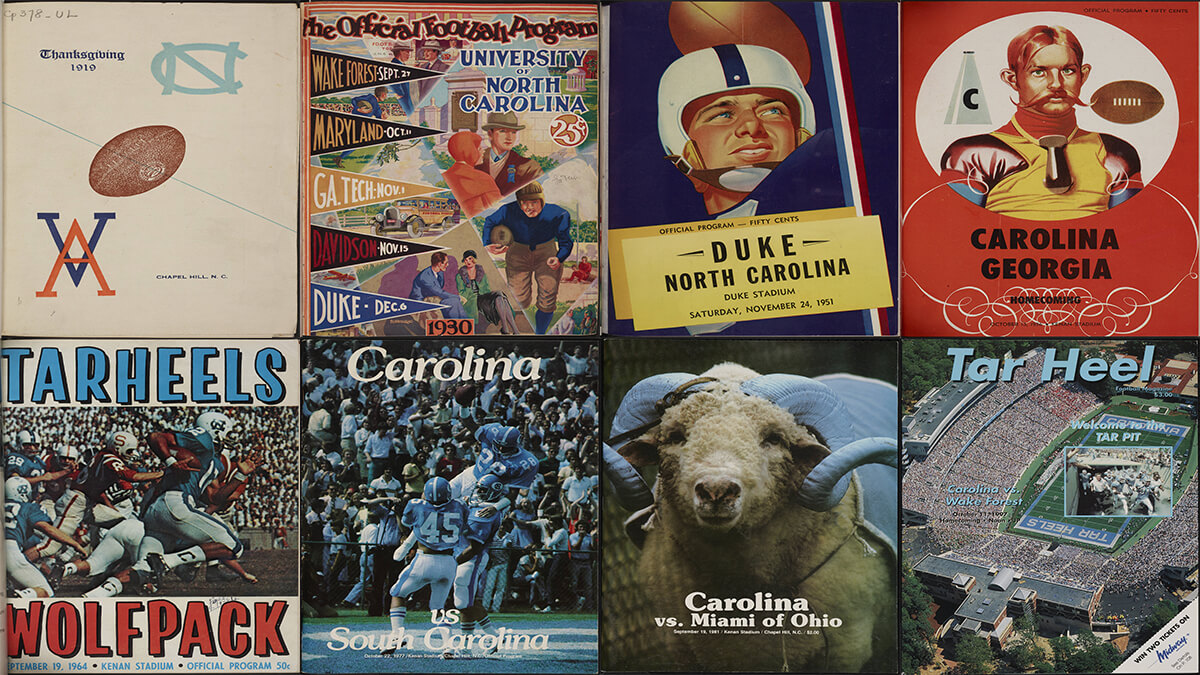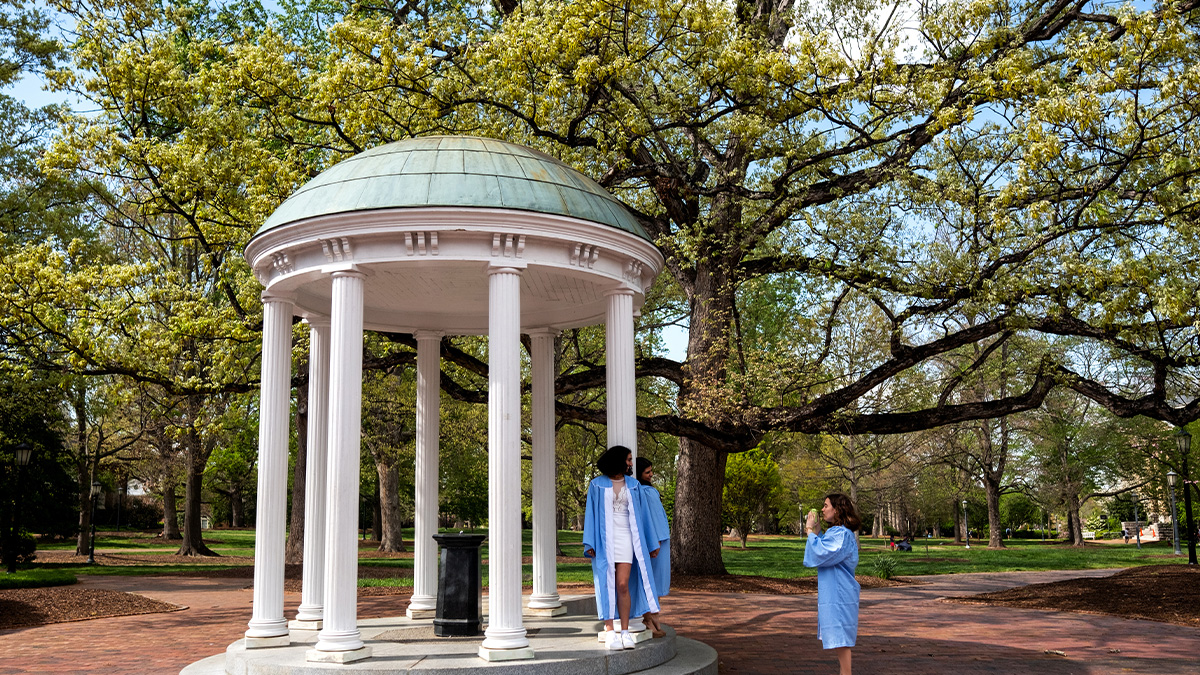Showcasing a century of football
The North Carolina Digital Heritage Center has created a new online digitized library of the nearly 100 years of Carolina football game program covers.

When Carolina quarterback Marquise Williams graced the cover of the season opening football game program, it was a far cry from the 50-cent publications that fans held in the stands when North Carolina and South Carolina met at the 1955 Oyster Bowl.
Sixty years ago, that program featured a hand-drawn picture of non-descript players on the front page — a far cry from today’s glossy magazines. Other changes in the Tar Heel publications over the decades — from images to players to fonts — can be found in Wilson Library’sNorth Carolina Collection. To showcase the collection, the North Carolina Digital Heritage Centerhas created a new online digitized library of the nearly 100 years of program covers.
With the ability to search by year and opponents, the collection allows fans to scan hundreds of covers to browse a visual history of the sport on campus.
“It really gives us a context,” said Nicholas Graham, program coordinator of the North Carolina Digital Heritage Center. “It helps to give a long view of the athletics program here. I think that football has been an important part of culture on campus for over a hundred years, and these demonstrate that.”
Beginning with the collection’s first program — from a game against the University of Virginia in 1919 — to the most recent in 2011, the covers showcase the growing impact of football.
“By 1919 it was already such a big deal that they were making special programs,” Graham said. “This was a hands-on design process, and they went through the trouble of creating these nice, high-quality programs for each game.”
As the years progressed, the programs changed in design and frequency. Early on, simple programs were designed for particular games, or elaborate ones were made for full seasons. It wasn’t until later on that full-scale publications were made for each game.
The changes, Graham said, seem to follow the sport’s popularity both on campus and nationally.
“They’re all different,” he said. “It’s really vibrant artwork and really creative. With the old ones, the production value is different — they’re kind of simple, but very colorful.
“Really when you get into the 50s, we have these bright, almost painting-like [covers]. They’re really decorative. … When you get into the 60s and 70s, they look a little more like what we see now.”
The covers also paint a picture of the changing collegiate football world. The collection features several early programs from Carolina games against Yale, military academies and smaller schools such as Davidson.
“The college football landscape was smaller and North Carolina was a big player,” Graham said.
Despite the changes in opponents and evolving program designs through the century, the collection of covers demonstrates how quickly football engrained itself into campus culture at the University of North Carolina at Chapel Hill.
“Football game day has always been a celebration and people would come from all over and these programs reflect that,” Graham said. “It was something that was a big deal.”




